In the rapidly evolving world of SaaS, effective content marketing plays a critical role in brand growth and audience engagement. The best content marketing agencies bring industry knowledge and strategic insights to the table, providing SaaS companies with tailored services that align with their business goals. Whether it’s lead generation, SEO optimization, or brand development, these agencies are equipped to meet the demands of the SaaS market. Here are the top 15 SaaS content marketing agencies you can partner with to achieve impactful results.
Get a Free Digital Marketing Strategy Consultation
1. Nuoptima

At Nuoptima, we’re an SEO agency committed to driving measurable growth for businesses through organic search. Our team consists of industry experts dedicated to leveraging SEO to create lasting, impactful results across various sectors, including eCommerce, healthcare, marketplaces, and SaaS. With extensive experience and numerous case studies, we work to ensure your business not only ranks higher in search engines but also attracts quality traffic that translates into revenue.
We take pride in becoming an extension of your team, collaborating closely to deliver tailored SEO and digital marketing solutions. From comprehensive SEO strategies and impactful content creation to technical optimization and link-building campaigns, we provide full-spectrum digital marketing services. Each element of our service is crafted to boost your brand’s online presence and generate the kind of organic growth that aligns with your business goals.
Over the years, our dedication to achieving excellent results has earned us industry recognition, with nominations and awards in categories such as Best SEO Campaign, Best B2B Campaign, and Business Transformation of the Year. These honors underscore our commitment to delivering exceptional outcomes for clients, from doubling organic traffic to achieving record-breaking conversion rates. Our approach is rooted in proven methodologies, and we’re proud to have helped numerous businesses reach new levels of success.
Our digital marketing offerings are comprehensive and crafted to meet the unique needs of every client. With a focus on SEO, we provide advanced keyword research, competitive analysis, on-site optimization, and content that ranks. Additionally, our services extend to paid advertising, including Google Ads and Facebook Ads, ensuring your brand reaches the right audience with maximum exposure. Each strategy is designed to foster a sustainable pipeline of organic growth and enduring brand awareness.
When you work with us, you’re choosing a team committed to transparency, accountability, and a data-driven approach. We believe that SEO is about more than just rankings—it’s about achieving meaningful results. Through regular monthly check-ins, detailed reports, and actionable insights, we keep you informed and involved at every step. Our flexible pricing and customized solutions make it easy to get started, and we’re here to support your business goals with a strategic, growth-oriented mindset.
Services:
- SEO Services
- SaaS Content Marketing
- Digital Marketing Solutions
- Paid Advertising
- Reporting and Analytics
Key Highlights:
- Integrated approach, adapting to each client’s specific needs for seamless collaboration
- Flexible pricing plans and customized service packages
- Proven success across multiple industries, including SaaS content marketing for lead generation
- Transparency with regular check-ins, detailed performance reports, and accountability
Key Achievements:
- Nominations for Best SEO Campaign, Best B2B Campaign, and Business Transformation of the Year
- Demonstrated results, including doubled organic traffic and record-breaking conversion rates
- Supported over 100 businesses in reaching growth milestones through SEO and content marketing for agencies
- Developed numerous case studies showcasing success metrics across diverse sectors
Contacts:
- Website: nuoptima.com
- Email: [email protected]
- LinkedIn: www.linkedin.com/company/nuoptima
- YouTube: www.youtube.com/@nuoptima
Request a Personalized Company Match
2. Content Allies
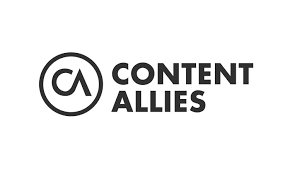
Content Allies, established in 2018, is a B2B podcast production agency headquartered in Colorado Springs, Colorado. The company specializes in launching, producing, and promoting podcasts and content series for B2B enterprises, focusing on strategies that impact clients’ revenue generation. Their services encompass strategy alignment, live recording engineering, and promotion tactics such as social media repurposing and podcast SEO. Operating on a white-glove, full-service model, Content Allies manages all aspects of podcast production, allowing clients to concentrate on conducting interviews and building relationships with guests.
The agency has collaborated with leading companies, including Meta, Siemens Energy, and Alibaba.com, producing hundreds of podcast episodes in production at any given time. Their team comprises producers, associate producers, writers, video and audio editors, project managers, graphic designers, guest procurement specialists, strategists, and quality assurance experts. Content Allies emphasizes the importance of aligning podcast strategies with business objectives, ensuring that each production contributes to the client’s bottom line.
Services:
- Content Creation
- Strategic Planning
- Content Distribution
- Lead Generation
- SEO Optimization
Key Highlights:
- Experienced in SaaS content marketing with a focus on lead generation.
- Strategic approach to content distribution for maximum reach.
- Skilled in crafting SEO-friendly content for target audiences.
Key Achievements:
- Successful implementation of content strategies that drive client growth.
- Strong reputation for delivering valuable leads through content marketing.
Contacts:
- Website: contentallies.com
- Address: 1624 Market St, Ste 226 PMB 37991, Denver, Colorado 80202
- Email: [email protected]
- LinkedIn: www.linkedin.com/company/contentallies
- YouTube: www.youtube.com/channel/UCT9v9dDdq-IZU-G4hW_ULTA
Schedule a Free Consultation Call
3. SmartBug

SmartBug Media, founded in 2007 and headquartered in Newport Beach, California, is a digital marketing agency specializing in services across the entire customer lifecycle. Their offerings include demand generation, revenue operations, paid media, customer success strategies, web services, artificial intelligence applications, and sales enablement. The agency has a global presence, with nearly 300 team members located in the U.S., Canada, Mexico, and El Salvador. SmartBug Media operates on a remote-first model, allowing them to hire talent across various regions. Their client portfolio spans multiple industries, including healthcare, manufacturing, SaaS, finance, franchise, and education.
Over the years, SmartBug Media has achieved significant milestones. They have been named to the Inc. 5000 list of America’s Fastest-Growing Private Companies for eight consecutive years, from 2017 to 2024. In 2019 and 2021, they were recognized as HubSpot’s Global Partner of the Year. The agency has expanded its capabilities through strategic acquisitions, including Worth eCommerce in 2021, Chair10 Marketing in 2023, and Globalia Inc. in October 2023. These acquisitions have enhanced their expertise in e-commerce, performance marketing, and digital transformation services.
Services:
- Inbound Content Marketing
- Sales Enablement Content
- Revenue Operations Strategy
- Web CMS Content Optimization
- Customer Success Content Services
Key Highlights:
- Largest HubSpot Partner with extensive expertise in content marketing.
- Leverages data-driven content strategies to engage throughout the customer journey.
- Works across multiple platforms including Klaviyo and Shopify.
Key Achievements:
- Helped clients double top-of-funnel engagement through strategic content.
- Recognized for significant boosts in lead generation and sales.
Contacts:
- Website: smartbugmedia.com
- LinkedIn: linkedin.com/company/smartbugmedia
- Twitter: twitter.com/SmartBugMedia
- Facebook: facebook.com/smartbugmedia
- Instagram: instagram.com/smartbugmedia
4. Tortoise and Hare Software
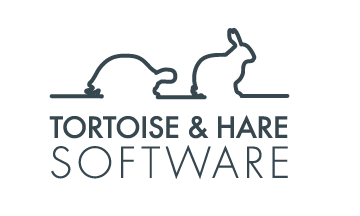
Tortoise and Hare Software, established in 2018, is a digital marketing agency based in Atlantic Beach, Florida. The company specializes in serving mid-market managed service providers (MSPs), focusing on web development and digital marketing solutions. Their services encompass website development, pay-per-click advertising, search engine optimization, content marketing, and marketing analytics. The agency operates with a team size ranging from 1 to 50 employees. Since its inception, Tortoise and Hare Software has assisted brands in generating over 35,000 leads and more than $7 million in new revenue. Their clientele includes various MSPs and technology service providers.
The agency’s founder, Hunter Nelson, brings over a decade of experience in the technology sector, including roles as a software developer and marketing analyst. Under his leadership, Tortoise and Hare Software has developed a marketing process that includes planning, market analysis, infrastructure development, quality assurance, campaign execution, and optimization. The company emphasizes a long-term, steady approach to marketing, drawing inspiration from Aesop’s fable of the Tortoise and the Hare. Their services are tailored to help MSPs build sustainable marketing pipelines and increase lead generation.
Services:
- Content Strategy and Creation
- Custom Content Solutions
- Brand Development
- Lead Generation
Key Highlights:
- Tailored content strategies for the SaaS and cybersecurity industries.
- Utilizes SDLC methodology for maximum impact in content marketing.
- Strong expertise in lead generation through targeted content.
Key Achievements:
- Over 35,000 leads generated for clients since inception.
- Helped clients achieve 400% growth in organic traffic.
Contacts:
- Website: tortoiseandharesoftware.com
- Phone Number: 904-775-7994
- Email: [email protected]
- LinkedIn: linkedin.com/company/tortoiseandharesoftware
- Twitter: twitter.com/tnhsaesop
- Facebook: www.facebook.com/tortoiseandharesoftware
- Instagram: www.instagram.com/tortoiseandharesoftware
5. Marketing Maven

Marketing Maven, founded in 2009, is a full-service marketing and communications agency headquartered in Camarillo, California, with additional offices in New York. The agency offers a comprehensive suite of services, including market research, digital advertising, PR, email marketing, event marketing, creative services, influencer marketing, social media marketing, and web development and management. Their team comprises integrated marketing specialists who create customized campaigns tailored to the diverse needs of their clients. Marketing Maven has been recognized as one of the Most Entrepreneurial Companies in America and one of the Fastest Growing Companies in America.
The agency’s leadership includes CEO and President Lindsey Carnett, who founded Marketing Maven after leading integrated communications campaigns for firms and private industries worldwide. The team also features Vice President of Media Relations Frank Tortorici, CTO John Carnett, Director of Integrated Marketing Andreya Peru, and other specialists in various marketing disciplines. Marketing Maven has collaborated with a diverse range of clients, including brands such as X-Chair, Yakult, WPO, Vistage, Verses, Nectar, Huma.ai, Lido, SBA, Servicon, and Taft. The agency’s mission is to exceed expectations and help clients achieve their marketing and communications objectives through a high level of professionalism and expertise.
Services:
- Content Marketing Strategy
- Social Media Management
- Brand Development
- SEO Optimization
Key Highlights:
- Expert in connecting brands with audiences through strategic content.
- Proven success in brand-building and engagement in SaaS.
Key Achievements:
- High client retention due to content-focused marketing strategies.
- Recognized for boosting brand presence in competitive markets.
Contacts:
- Website: marketingmaven.com
- Phone: 212.967.5510
- E-mail: [email protected]
6. CIENCE
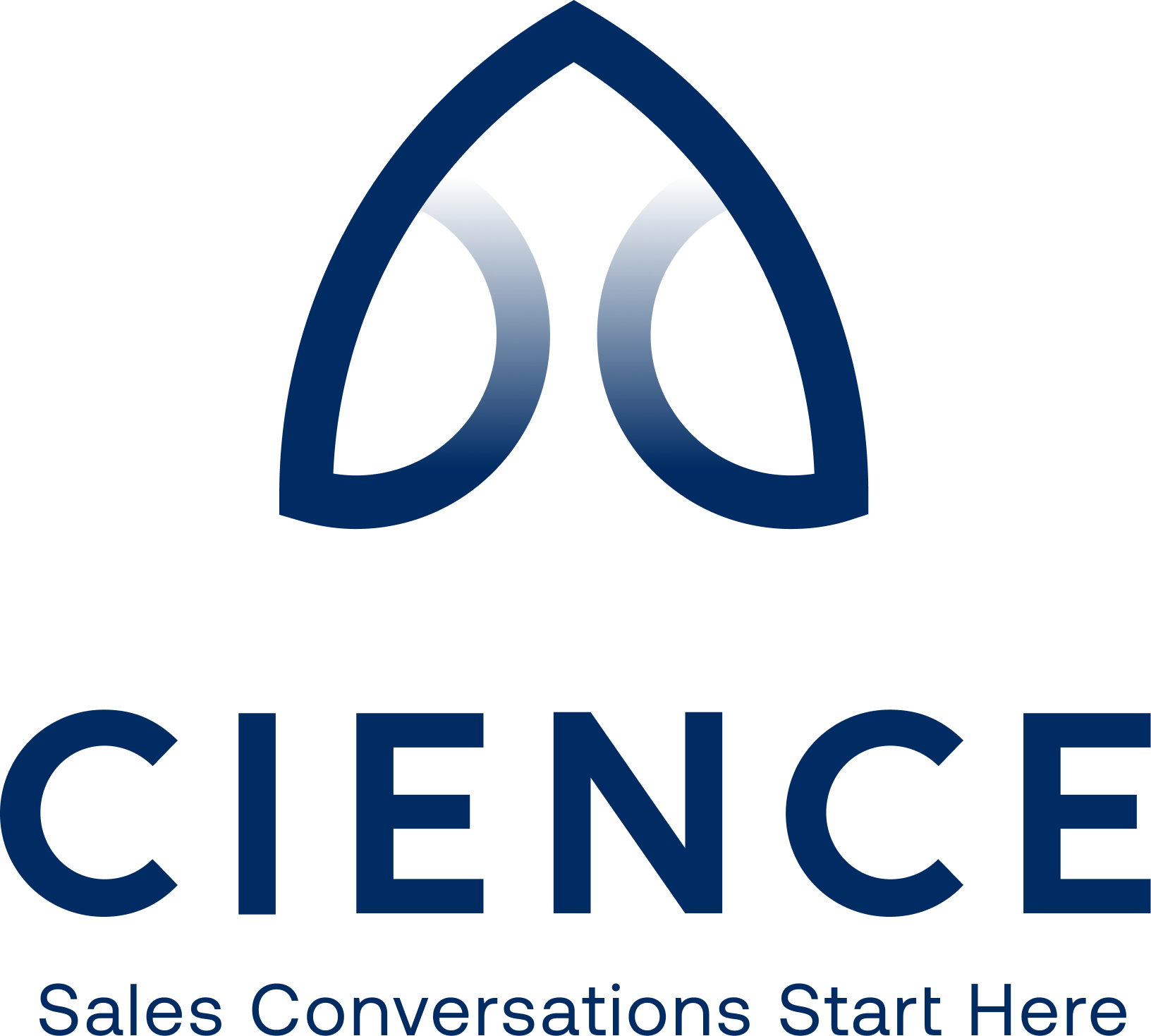
CIENCE, established in 2015, is a private company headquartered in Denver, Colorado, specializing in lead generation and sales acceleration services for B2B clients. The company offers a range of services, including outbound and inbound SDR, data solutions, and multi-channel outreach strategies. CIENCE’s proprietary platform, CIENCE GO, integrates AI capabilities with human expertise to enhance targeting and engagement efforts. As of 2023, the company employs approximately 1,345 individuals across 12 locations globally, including offices in Miami, San Francisco, Solana Beach, Campinas (Brazil), and Berlin (Germany).
In 2021, CIENCE reported an annual revenue of $29.1 million. The company’s client portfolio encompasses over 2,500 businesses, ranging from startups to Fortune 500 corporations. CIENCE operates on a People-as-a-Service model, combining technology-driven solutions with human-driven strategies to deliver scalable results for its clients. The company’s leadership team includes CEO Michael Gear, COO August Keating, CMO Eric Quanstrom, and CRO Michael Maynes. CIENCE has been recognized for its innovative approach in the lead generation industry and continues to expand its services to meet the evolving needs of B2B companies.
Services:
- Demand Generation
- Account-Based Content Marketing
- Multi-Channel Campaigns
- Real-Time Content Engagement
Key Highlights:
- Combines AI and human expertise to optimize content marketing efforts.
- Strong platform for pipeline management and content-driven lead generation.
Key Achievements:
- Recognized leader in outbound content marketing and lead generation.
Contacts:
- Website: www.cience.com
- Email: [email protected]
- LinkedIn: www.linkedin.com/company/cience
- Twitter: twitter.com/ciencecom
- Facebook: www.facebook.com/cience.tech
- Instagram: www.instagram.com/cience.technologies
7. Callbox

Callbox, established in 2004, is a B2B marketing company headquartered in Los Angeles, California, with additional offices in Iloilo City, Philippines. The company specializes in lead generation, appointment setting, and data-related solutions, serving clients across various industries, including technology, healthcare, and manufacturing. Employing over 700 professionals, Callbox has executed more than 20,000 lead generation programs and delivered over 1.3 million qualified leads to date. Callbox’s proprietary AI-powered lead generation platform, SMART Engage, integrates multiple communication channels such as email, voice, social media, and SMS to enhance outreach and engagement efforts.
The company’s leadership team includes CEO and Founder Rom Agustin, COO Rebecca Matias, and VP of Operations Jaime Garcia. Callbox has received industry recognition, including being named one of the 20 Most Innovative Companies of the Year by Global Smart Leaders Magazine in 2020. Their client portfolio features over 15,000 companies globally, including four of the five largest companies in the world. Callbox operates on a 30-day rolling contract basis, offering flexible engagement terms without long-term commitments. Their multilingual support capabilities cover more than 15 languages, enabling them to cater to a diverse, international clientele.
Services:
- Content-Driven Lead Generation
- Appointment Setting
- Multi-Channel Content Strategy
- Account-Based Content Marketing
Key Highlights:
- Expertise in multi-channel campaigns and content-driven lead generation.
- Operates globally with support in 15+ languages.
Key Achievements:
- Known for accelerating sales cycles with targeted content marketing.
Contacts:
- Website: www.callboxinc.com
- Email: [email protected]
- Global Contact Numbers available for Singapore, Australia, Malaysia, New Zealand, Hong Kong, Colombia, and the United Kingdom
8. Directive Consulting

Directive, established in 2014, is a performance marketing agency specializing in SaaS companies. Headquartered in Irvine, California, with additional offices in Austin, New York City, Toronto, London, and Mexico City, the agency employs over 100 marketing strategists. Directive offers services including content and SEO, paid media, CRO and performance design, marketing operations, video marketing, and go-to-market strategy. Their methodology, termed “Customer Generation,” focuses on driving revenue growth for clients. The agency allocates $2.2 million annually to research and development, testing tactics before implementation.
The leadership team comprises CEO Garrett Mehrguth, COO Caitie Collins, VP of Performance Marketing Larissa Williams, and Managing Partner of Operations Tanner Shaffer. Directive emphasizes a data-driven approach, utilizing financial modeling and first-party attribution to inform strategies. The agency’s services are designed to improve down-funnel performance by aligning efforts with business outcomes. Directive’s commitment to innovation and specialization in SaaS marketing positions them as a significant player in the industry.
Services:
- SEO & Content Marketing
- Paid Media & Content Amplification
- Lifecycle Marketing
- Creative Content Design
Key Highlights:
- Comprehensive service model tailored for SaaS and tech brands.
- Data-driven approach ensures maximum impact from content campaigns.
Key Achievements:
- Recognized for increasing organic traffic and lead generation.
Contacts:
- Website: directiveconsulting.com
- Email: [email protected]
- Phone Number: +1 949 214 4024
- LinkedIn: ca.linkedin.com/company/directive-consulting
- Twitter: twitter.com/directiveagency
- Facebook: www.facebook.com/directiveconsulting
9. Search Nurture

Search Nurture, established in 2017, is a digital marketing agency headquartered in San Francisco, California. The agency specializes in services such as search engine optimization, paid media campaigns, and retail advertising, primarily catering to the eCommerce and B2B SaaS sectors. Their team comprises over 17 marketing professionals who collaborate with clients to develop tailored strategies aimed at enhancing online visibility and driving sales. Search Nurture operates on a client-specific, hand-tailored approach, distinguishing itself from agencies that employ a one-size-fits-all methodology.
In addition to their core services, Search Nurture emphasizes a culture of inclusion and collaboration. Their leadership team includes CEO Spencer Padway, Head of Operations Lindsey McAndrews, Sr. Director of People Savannah Alexander, and Director of Sales Eli Weidinger. The agency’s origins as a marketing training academy have influenced its current operations, with a continued focus on education, growth, and empowerment for both clients and employees. Search Nurture’s client portfolio includes brands such as John Frieda and eCreamery, reflecting their capacity to manage diverse and geographically varied projects.
Services:
- SEO & Content Marketing
- Paid Media
- Retail Ads
- Content Strategy and Creation
Key Highlights:
- Expertise in content for the eCommerce and SaaS sectors.
- Analytical approach ensures results-driven content strategies.
Key Achievements:
- Helped clients boost brand visibility with targeted content.
Contacts:
- Website: www.searchnurture.com
- Email: [email protected]
- Phone Number: (510) 679-3507
- LinkedIn: www.linkedin.com/company/13312424
- Instagram: www.instagram.com/search_nurture
10. Inter-Dev
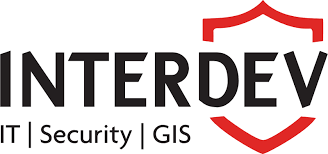
Inter-Dev, established in 2007, is a B2B digital marketing agency headquartered in Israel. The agency specializes in serving technology companies and startups, offering services such as digital campaigns, search engine optimization, content marketing, and HubSpot marketing automation. Their client portfolio includes companies in sectors like cybersecurity, SaaS, industrial manufacturing, broadband, medical, and communications. Inter-Dev’s team comprises professionals experienced in managing digital marketing strategies tailored to the unique needs of B2B enterprises.
The agency’s service offerings encompass paid search engine marketing, paid social media advertising, inbound content marketing, social media management, video production marketing, and podcast production services. They also provide digital analytics services, including tag management, heat-mapping, conversion tracking, funnel creation, and user engagement analysis. Inter-Dev has collaborated with clients such as Rad, Hailo, Phase One, LiveU, Itamar Medical, D-ID, MeMed, Autotalks, and Elron Ventures. Their approach focuses on planning and executing integrated digital marketing activities aimed at scaling online presence and engaging targeted audiences.
Services:
- Performance Content Marketing
- SEO and Digital Analytics
- Content Creation and Distribution
- Marketing Automation
Key Highlights:
- Extensive experience across various B2B industries.
- Focus on SEO-driven growth and content marketing for tech firms.
Key Achievements:
- Known for implementing impactful content strategies.
Contacts:
- Website: inter-dev.co.il
- Email: [email protected]
- Phone Number: +972-3-7173777
- LinkedIn: www.linkedin.com/company/inter-dev
- Facebook: www.facebook.com/idmarketing
11. NinjaPromo

NinjaPromo is a digital marketing agency specializing in SaaS content marketing and multi-channel strategies. With a wide range of services, they emphasize subscription-based models, offering clients services across social media management, SEO, paid advertising, and influencer outreach. Their SaaS-focused strategy includes sector-specific content marketing, and they are well-versed in Web3 and blockchain content, adding expertise in crypto and DeFi marketing. In terms of technical capabilities, NinjaPromo offers video production services, including explainer videos designed to simplify complex SaaS solutions.
They handle custom content for B2B sectors, finance, healthcare, and real estate, producing high-detail 2D, 3D, and animated videos. Their multi-industry reach includes not only SaaS but also FinTech, healthcare, eCommerce, and gaming. With experience in PR and branding, they also create and manage online reputations for SaaS brands, addressing industry-specific needs through content strategies that adapt to the fast-paced SaaS market. NinjaPromo’s flexible monthly subscription model provides clients with ongoing access to marketing services, allowing for regular campaign updates and optimization aligned with industry shifts and client growth.
Services:
- Social Media Content & Engagement
- SEO & Content Optimization
- Influencer & Content Partnerships
- Video Content Creation
Key Highlights:
- Expertise in content marketing for B2B, fintech, and SaaS sectors.
- Known for impactful storytelling and engagement.
Key Achievements:
- Reduced advertising costs while enhancing engagement for clients.
- Improved brand visibility and SEO for multiple high-profile brands.
Contacts:
- Website: ninjapromo.io
- Email: [email protected]
- Phone Number: +1 929-492-4413
- Telegram: t.me/cryptoninja_news
- LinkedIn: www.linkedin.com/company/ninjapromo
- Twitter: twitter.com/ninjapromoio
- Facebook: www.facebook.com/ninjapromoofficial
- Instagram: www.instagram.com/ninja.promo
12. Bay Leaf Digital
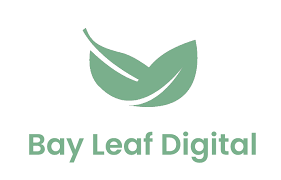
Bay Leaf Digital is a Texas-based SaaS marketing agency specializing in content marketing, SEO, PPC, and other digital services to support SaaS businesses across North America. Established in 2013, the agency works with clients ranging from early-stage startups to large enterprises, focusing on demand generation, lead nurturing, and marketing automation. Bay Leaf Digital assigns each client a dedicated team, typically comprising a Senior Marketing Strategist and Account Manager, supported by experts in specific digital channels.
A notable aspect of Bay Leaf Digital’s operation is its specialization in integrating and optimizing client technology stacks, including popular platforms for marketing and customer relationship management. Their approach combines traditional digital marketing with emerging technologies like AI, making them adaptable to changes in the SaaS landscape. The agency also emphasizes transparency in reporting, providing clients with insights into metrics like MQLs and growth rates on specific channels such as LinkedIn. Through a full-funnel marketing approach, Bay Leaf Digital supports its clients’ growth and development, leveraging a decade of industry experience to design and implement high-impact strategies.
Services:
- SaaS Content Marketing
- Analytics & PPC
- SEO & Retargeting
- Content Strategy
Key Highlights:
- Specializes in B2B SaaS content strategies.
- Known for qualified lead generation.
Key Achievements:
- Improved client conversion rates through data-driven content.
- Consistent boosts in digital visibility and client engagement.
Contacts:
- Website: www.bayleafdigital.com
- Phone Number: 866 200 9814
- LinkedIn: www.linkedin.com/company/bay-leaf-digital
- Twitter: twitter.com/BayLeafDigital
- Facebook: www.facebook.com/bayleafdigital
13. SimpleTiger
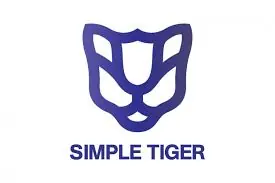
SimpleTiger is a SaaS-focused digital marketing agency specializing in SEO, content marketing, and PPC services for SaaS companies across B2B, B2C, and enterprise levels. Founded with a focus on simplifying SEO and growth tactics, SimpleTiger utilizes proprietary AI-driven data intelligence to enhance its marketing strategies. Their technology prioritizes high-impact keywords and identifies optimal content to attract users at every stage of the buying journey. The company emphasizes time-to-results, leveraging AI tools to fast-track SEO, which traditionally yields slower returns. SimpleTiger’s services include comprehensive keyword research, technical SEO, content development, and link-building, all aimed at increasing visibility and conversion rates for SaaS clients.
SimpleTiger integrates organic and paid advertising to optimize CPC and CAC, benefiting from the conversion insights of paid ads to refine organic content. Their approach aligns with the 80/20 principle, focusing on the 20% of actions that drive 80% of results. SimpleTiger’s client roster includes companies like Bitly, Jotform, and Segment, and they have received recognition from Clutch as a top SEO and content marketing company. With AI-fueled competitive analysis, SimpleTiger seeks to stay ahead of industry trends and provide clients with tailored strategies that emphasize ROI and growth efficiency.
Services:
- SaaS SEO
- Content Strategy
- Technical SEO
- Content Marketing
Key Highlights:
- AI-driven content marketing solutions for SaaS.
- Specializes in content strategies for rapid growth.
Key Achievements:
- Successfully scaled SaaS clients through innovative SEO.
- Recognized for enhancing online visibility and traffic growth.
Contacts:
- Website: www.simpletiger.com
- Phone Number: +1 (941) 893-4118
- LinkedIn: www.linkedin.com/company/simpletiger-llc
- Twitter: twitter.com/simpletiger
- Facebook: www.facebook.com/simpletigerllc
14. Brafton

Brafton, a SaaS content marketing agency, delivers a range of digital content services focused on driving growth for SMBs and enterprise-level clients. Their core offerings include SEO-focused copywriting, graphic design, video production, and animation services. Using a data-driven approach to SEO, they target keywords aligned with audience intent, optimizing landing pages, blog posts, and website copy to improve clients’ search visibility. Their design team specializes in infographics, display ads, and other visual assets for use in multi-channel campaigns. In addition, Brafton offers custom web design services aimed at improving user engagement and brand credibility.
Brafton’s marketing services extend beyond content creation to include social media management, email marketing, and CRO. Social media strategies are tailored to major platforms, designed to drive brand visibility and user engagement for clients. Project management at Brafton is facilitated through proprietary platforms, providing clients structured collaboration and efficient delivery of marketing solutions. Operating from offices in Boston, Chicago, and Sydney, Brafton serves a diverse client base across the U.S., Australia, and Europe, allowing them to adapt to international market demands with region-specific strategies.
Services:
- Content Marketing Strategy
- SEO & Content Creation
- Social Media Content
- Video Production
Key Highlights:
- Known for creating high-quality, data-driven content.
- Strategic approach to content that delivers measurable results.
Key Achievements:
- Successfully increased client ROI through comprehensive strategies.
- Enhanced SEO rankings and content engagement for diverse industries.
Contacts:
- Website: www.brafton.com
- Email: [email protected]
- Phone: 617-206-3040
- LinkedIn: www.linkedin.com/company/brafton
- Facebook: www.facebook.com/Brafton
- Twitter: twitter.com/Brafton
- Instagram: www.instagram.com/brafton
15. SmartSites
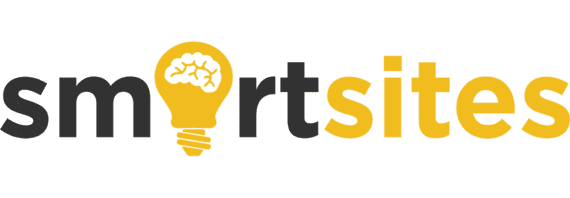
SmartSites, founded in 2011 and headquartered in Paramus, New Jersey, is a digital marketing agency known for offering a comprehensive range of services aimed at enhancing online presence for businesses of various sizes. They specialize in web design, SEO, PPC, email and SMS marketing, and social media management, with a team of over 100 digital marketing professionals. SmartSites has launched more than 900 websites, and their data-driven approach has reportedly generated over $100 million in revenue for clients.
SmartSites has a portfolio demonstrating notable client results, such as a 652% increase in total site traffic for Velocity Moving and a 1,491% increase in revenue per click for Colt Exhaust. Their approach to customized strategies across various sectors has led to measurable results in organic and paid digital channels, with clients in industries like industrial, small business, and healthcare achieving traffic increases of over 400% in many cases. In client satisfaction surveys, SmartSites scored a 97% in quality of service, supported by over 1,000 five-star reviews. With clients across the U.S. and worldwide, SmartSites emphasizes client-focused, scalable digital strategies aimed at improving both brand visibility and revenue generation.
Services:
- Content Marketing
- PPC Advertising
- SEO Optimization
- Conversion Rate Optimization
Key Highlights:
- Expert in content strategies for user engagement.
- Recognized for innovative and effective content marketing solutions.
Key Achievements:
- Delivered significant increases in lead generation for clients.
- Proven success in organic search and content ROI improvements.
Contacts:
- Website: www.smartsites.com
- Email: [email protected]
- Phone Number: 201 870 6000
- LinkedIn: www.linkedin.com/company/smartsites
- Twitter: twitter.com/smartsites
- Facebook: www.facebook.com/smartsites
- Instagram: www.instagram.com/smartsites
Conclusion
Selecting the right content marketing agency is essential for SaaS companies seeking to build their online presence, generate leads, and achieve sustainable growth. The agencies listed here provide top-notch services and have a track record of success across the SaaS industry. By partnering with one of these agencies, SaaS companies can leverage industry-specific expertise to drive measurable results and maintain a competitive edge in today’s market.